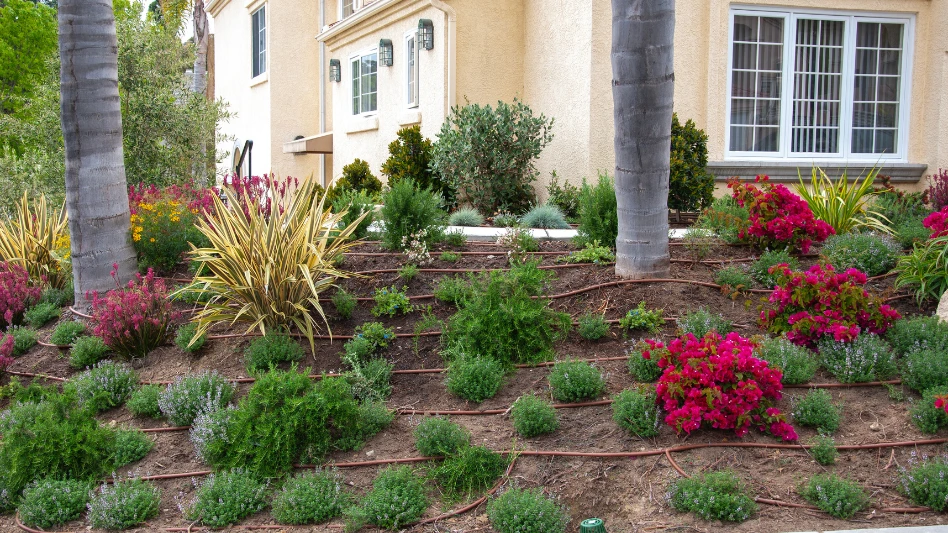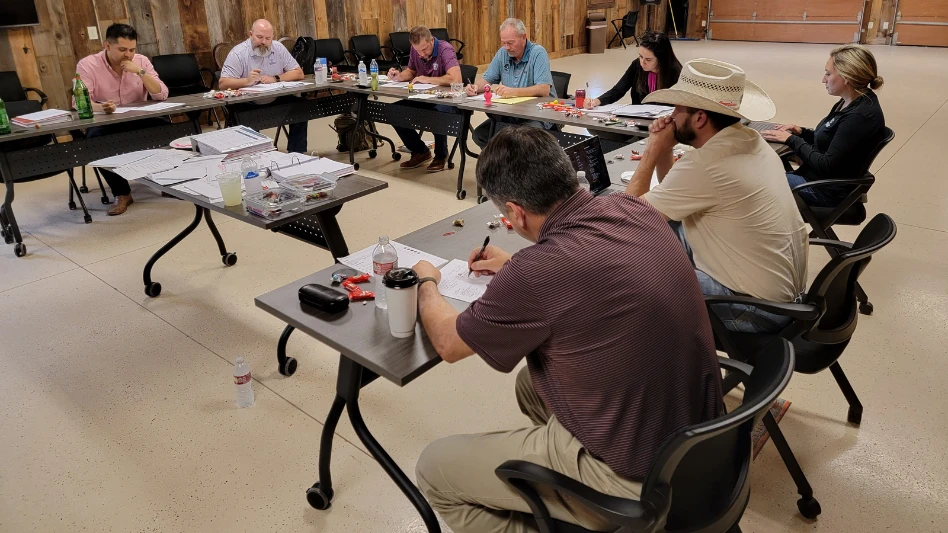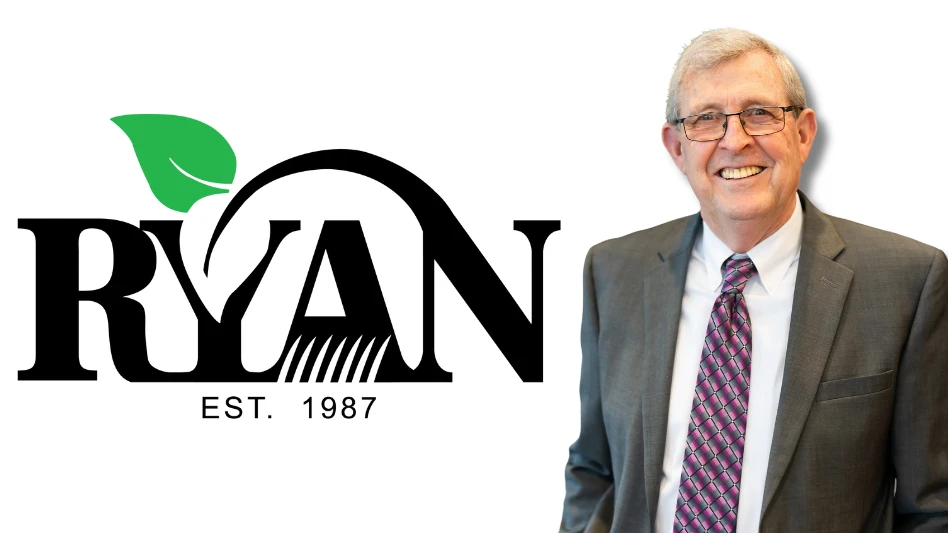
According to various sources, globally we consume about 80 million tons of road salt per year. Of that, the United States consumes about 25 percent in a heavy winter. Interestingly, Europe consumes just 7-8 million tons. All of this despite Europe being twice the U.S. population with roughly the same-sized land mass and
How is it that we are using three times as much deicer with just half the population size?
Why so much? If you ask 100 people in the snow business this question, you might get 50 different answers. However, here’s how I see it.
Tort law is No 1. Slip-and-fall lawsuits are expensive, with the average lawsuit settlement reaching over $100,000. That is everything from the “staged” fall in the supermarket to the person in leather dress shoes slamming their face on a snow-filled parking lot. The cost of settling these lawsuits far exceeds the cost of just blasting the surface with deicers. So, the prevailing mindset is, “If a little does a good job, more will do a better job.” We’ll soon learn why that mindset is often wrong.
The second issue is the advent of SUV and 4WD in the hands of people who shouldn’t be driving in snow. If you live in the Snowbelt, it’s likely you or a neighbor own a four-wheel or all-wheel drive vehicle. Those vehicles enable travel for a segment of our population that does not respect winter driving and thinks they don’t need to leave for work early on snow days – i.e. “The streets need to be black and wet!”
Adding insult to injury is that our climate is changing. We see more and more ice storms creeping North into the traditional Snowbelt. These ice storms consume 3-5 times the quantity of deicer than comparable snow storms. Fighting an ice storm is an all-chemical fight. In other words, a plow and shovel are useless for ice removal until that ice has been hit with chemical deicer first.
We’re seeing this problem all over the Southeast U.S. Many communities are now ramping their snow-fighting equipment following unexpected and sometimes catastrophic winter weather events. Take Atlanta and Dallas. In recent years, these communities were paralyzed by ice storms that closed down cities for days. Many of these disasters could’ve been avoided with more sufficient resources to manage wide-spread ice events. But now we’re seeing the aftermath, an over-reaction: too much willingness from affected communities to apply product during storms regardless of whether the conditions demand it.
Yes, it’s important to be prepared, and no one would argue that point. But now we need to take a closer look at how our behaviors might be creating bigger and more complicated problems.
Using lots of deicers. Everything in life is a consequence for an action. Usually, the consequences are desired, such as melting away snow and ice so the surface is safely passable. However, when we increasingly slather our road surfaces with deicers, where does the run-off go? This is the adverse consequence of deicing use – because every pound of deicer purchased is disposed of back into the environment.
Think about that. Every pound purchased is then applied to the property of that purchaser – at which point the deicer either seeps into the ground, runs off with stormwater, or if it’s chloride-based, reacts with steel to corrode bridges, vehicles and electrical systems. Unfortunately, these potential adverse consequences for our transportation and infrastructure are just the tip of the iceberg.
Contaminants. Salt is sodium chloride. When sodium chloride seeps into groundwater, aquifers, lakes, streams
As we already know, salt demand in the U.S. is exploding. And with this explosion comes an increase in new and often unproven global sources of salt entering the U.S. market. This isn’t always good. A New England region user who recently switched from a Chilean-sourced to North African-sourced salt provider later tested their product to find high levels of heavy metals. Unfortunately, those contaminants were high enough to break through the company’s stormwater discharge permit threshold limits. The consequence: an EPA violation of a $250,000 fine and a final warning that one more violation would close a nearly 100-year-old manufacturing business – thereby idling hundreds of employees. All of this from what should have been innocuous, routine winter ice control.
If we plan on preserving our private facilities, stormwater management control centers
But it’s also just as important to recognize that this problem isn’t only limited to global markets. Recently, a U.S. source of magnesium chloride start showing detectable levels of polychlorinated biphenyls (PCBs) in their liquid magnesium chloride deicer at a community in the Pacific Northwest. PCBs are a major environmental concern since they not only take hundreds of years break down, but they’re also carcinogenic. While the levels were relatively low, the fact is that PCB contamination in the Great Salt Lake carried over into product that was applied to roads in a state 800 miles away. That goes to show how widespread and interconnected these issues are, and understandably, why environmentalists and regulatory agencies are not enamored with polluting their highways and adjacent lands.
Moreover, areas with high population concentration and high use of deicing products are now seeing near-toxic levels of chlorides in fresh water; that is, toxic to people and fish. Flint, Mich., had lead problems that made major news headlines for over a year. Soon, we can expect to see high sodium levels and chloride levels in other communities threatening aquatic life and potable water purity. Is it possible that deicing usage might one day evoke the same public outcry as Flint did with its lead? If the environmental damage all falls back on the mismanagement of winter deicing operations, then the answer is yes.
Not just road salt. These problems are not limited to road salt, but with upwards of 20 million tons of salt hitting the US environment every year, we need to look at all the products we use in winter deicing no differently than we would look at the fertilizers, herbicides
With increased attention on groundwater recharge, many property owners are now using porous pavement surfaces to enable groundwater recharge more readily. These porous surfaces facilitate groundwater recharge, but they also require more deicer to keep them unplugged from ice. We can quickly see how this might become counterproductive: save the surface for safe passage; destroy the groundwater with contaminants in the process. Keep in mind that when we pollute our drinking water sources, cleanup is incredibly expensive and difficult.
From what the state puts on our interstates and roads to what the homeowner buys at retail… all of it ends up back in our environment. There is little to no regulatory oversight, labeling requirements, or enforcement until after this type of pollution becomes the problem of the property owner. Once again, an adverse consequence.
Pathway forward. There are no easy answers here. My viewpoint is that education should be first on our list. The motoring and traveling public must be more understanding during snow events. They cannot set the bar so high that we are slathering every horizontal surface with excessive deicers to allow for winter travel at dry pavement speeds. After that, we need to be better about informing property owners about the potential problems from heavy applications. We need to carefully respect that if we are adjacent to wetlands or on top of an aquifer, we must use much less product, or in some cases, a different product as to not potentially threaten those resources. If we make a broad, concerted effort to educate the market, it will benefit all of us. Finally, we need to use the best available practices and methods to reduce the amount of product we apply. This is so we meet needs and avoid over-applying – all while keeping our people and
We need to advocate sensible deicing practices and help educate people who have no understanding of what we, snow fighters and related businesses, do. Most importantly, we need to encourage everyone to use less. Another 30 years of hitting our surfaces as we do now will find us saddled with obscene contamination cleanup costs… and that’s IF we even have the ability to clean up the mess.
Rob English is the president of Chemical Solutions Inc. and is a frequent contributor to Snow Magazine, our sister publication.
Latest from Lawn & Landscape
- LMN partners with Attentive.ai
- Get to know the generations working for you
- Addressing addiction in landscaping
- Fairway expands national footprint with 6 acquisitions
- Graze Robotics opens new headquarters in Plano, Texas
- Addiction in the green industry
- Kress earns Sourcewell approval
- The best laid plans





